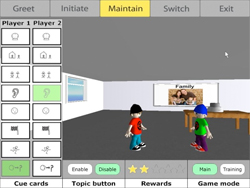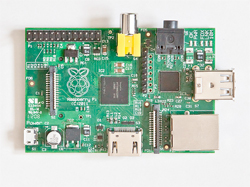
James has taught in special needs since he qualified in 2009. He specialises in working with post-16 students running a Life Skills curriculum, looking to develop their social, communication, life and vocational skills to help them take an active role in the community. He is also responsible for curriculum development, focusing on finding suitable accreditation and adapting it to allow all learners to achieve.

I have been fortunate to get my hands on a Google Chromecast over the Christmas period and have been exploring what the potential of this device could be for use in the classroom.
Google Chromecast is Google’s attempt to make it easier to bring web video to your TV via the use of their dongle. This plugs into an HDMI port on your telly and projector and allows you to send videos, music and other files to it via Andriod and iOS devices using Chrome browser on you computer. There are a limited amount of apps that take advantage of the Chromecast - YouTube, Netflix, Google Music, to name a few - however, this list is increasing. The function that I am quite excited about is the ability to stream an open tab in the Chrome browser and the potential for this. I will explain more about this later but first I am going to look at how to setup the Chromecast and then how it can be used in the classroom.
Photo credit: Scott Beale - image has been edited

The main emphasis of the COSPATIAL project is finding ways to adapt existing classroom technologies to engage children with autism in learning social skills. The project is being led by Dr Sarah Parsons of the University of Southampton and Dr Sue Cobb of the University of Nottingham. Thanks go to Dr Sarah Parsons for talking us through the project and, although we did not get to see the project in action, it was clear to see how the technology would be used with Autistic Spectrum Condition (ASC) students.
The COSPATIAL project focuses on two types of technologies:
In this post I am going to concentrate on the Collaborative Virtual Environments. These allow multiple users to interact and communicate within a shared virtual space. They do this by accessing the space on individual laptops that are in the same room. There are 3 different programs that the students can use, each working on different elements of social interaction from communication to working together to complete a task.

The purpose of this post is to explore some of the technology that myself and some of my colleagues are hoping to implement in our school over the next year. We have set up an ICT working group with two aims. The first is to explore cost effective ways of using technology to create engaging and creative uses of ICT. The second is to explore new technology and see what potential it may have for SEN learners.
The discussion started with an introduction to some of the ideas we have come across in the last couple of months.

A community-driven platform for showcasing the latest innovations and voices in schools
Pioneer House
North Road
Ellesmere Port
CH65 1AD
United Kingdom